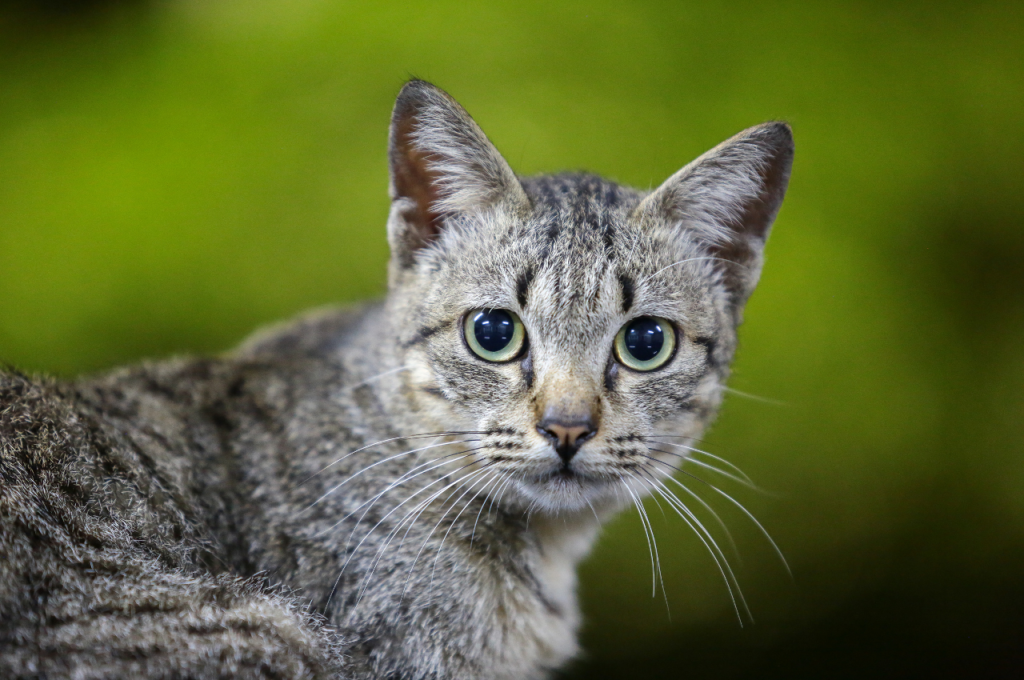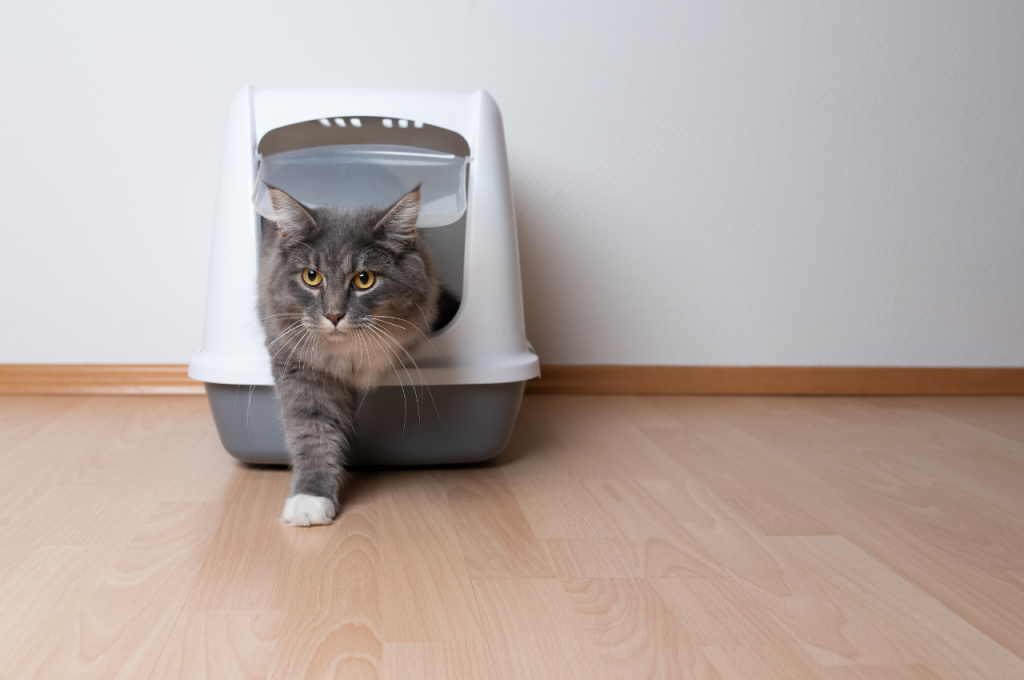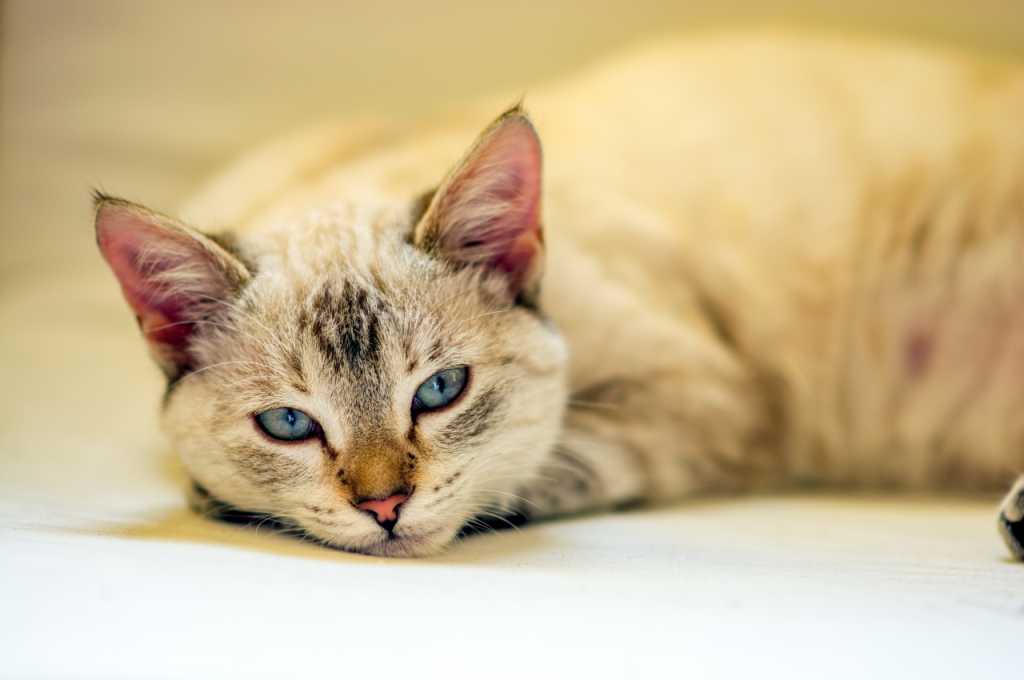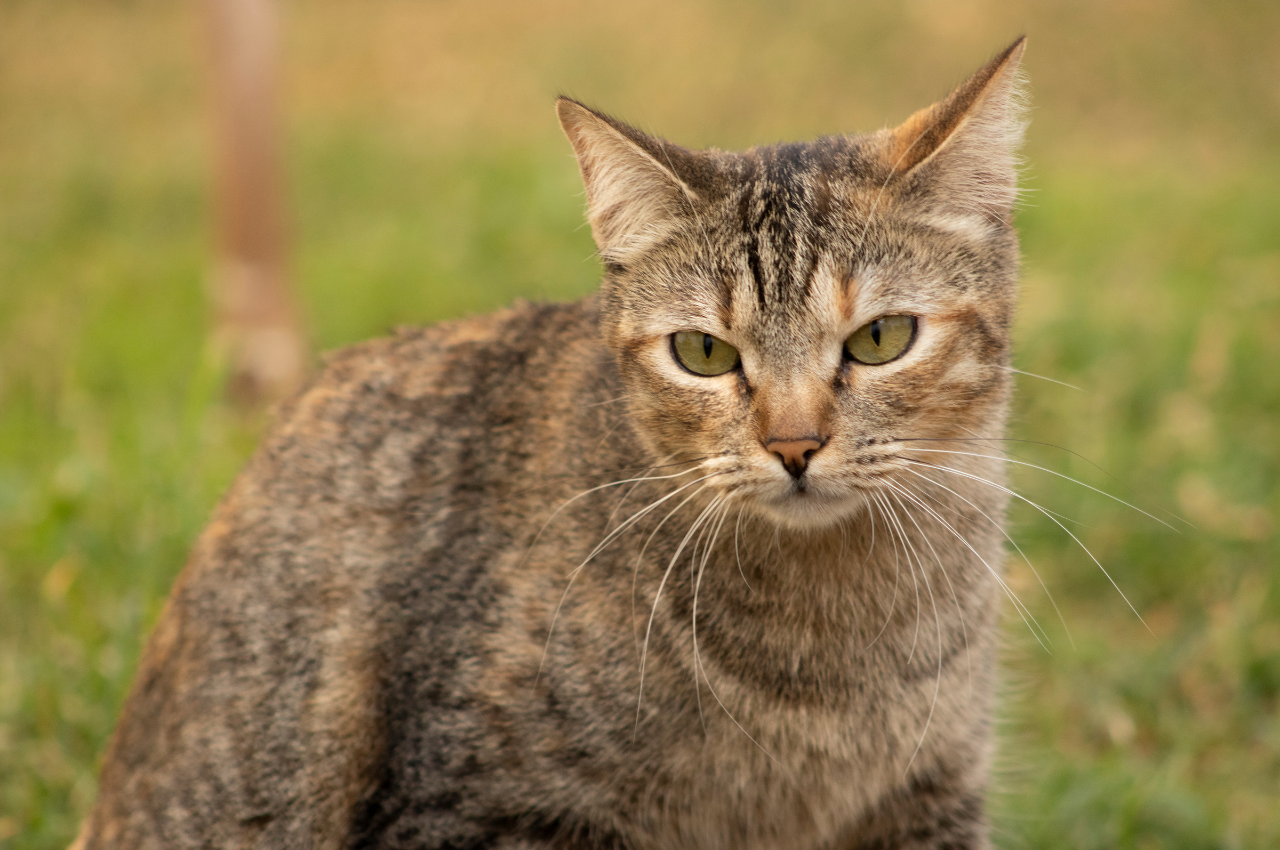To tell if a cat is suffering, observe if they are experiencing changes in behavior, appetite, or energy levels. Additionally, look out for signs of physical pain, such as limping or avoiding touch.
If you notice any concerning symptoms, it is best to consult with a veterinarian. Cats are beloved pets that offer companionship and entertainment to their owners. However, like all animals, they are prone to experiencing health issues that can lead to suffering. As a responsible pet owner, it is important to be aware of the signs and symptoms that indicate your cat may be in pain or discomfort. By understanding what to look for, you can ensure that your feline friend receives the appropriate care and treatment they need to live a happy and healthy life. We will explore how to tell if a cat is suffering and what steps you can take to help them feel better.
Recognizing Feline Pain
Detecting feline pain is crucial for cat owners. Signs of discomfort include changes in behavior, reduced activity, and increased aggression or vocalization. Monitoring eating habits and grooming behavior can also offer insight into a cat’s well-being. Regular veterinary check-ups are essential for identifying and addressing any potential sources of pain.

Behavioral Changes
When a cat is in pain, they may exhibit noticeable behavioral changes. Look for increased aggression, restlessness, or hiding as signs of discomfort. Loss of appetite and reduced grooming can also indicate pain.
Physical Signs
Feline pain can also manifest in physical signs. Watch for limping, difficulty jumping, or unwillingness to be touched in specific areas. Excessive grooming of a particular spot or changes in posture may also indicate discomfort.
By paying attention to these behavioral and physical cues, cat owners can be more attuned to their pet’s well-being and address any potential pain or discomfort promptly. Remember, recognizing feline pain early can lead to swift intervention and a happier, healthier cat.
Vocalizations And What They Mean
Vocalizations are an essential form of communication for cats, and understanding what different vocalizations mean can provide insight into their well-being. Paying attention to their vocal cues can help you identify if your feline friend is in distress or discomfort. Here’s a breakdown of the various vocalizations and their potential implications.
Increased Meowing
If your cat is meowing more than usual, it could indicate a range of issues such as hunger, stress, anxiety, pain, or disorientation. It’s important to observe any accompanying behaviors or changes in routine to determine the underlying cause.
Hissing And Growling
Hissing and growling are defensive vocalizations that cats use to express fear, aggression, or territorial behavior. These vocal cues can signal that your cat is feeling threatened or uncomfortable in their environment. It’s crucial to identify the source of their distress and address it appropriately.
Changes In Eating Habits
Changes in eating habits can be a key indicator of a cat’s well-being. Monitoring their food and water intake is crucial in identifying any potential issues that may be causing them distress or discomfort.
Loss Of Appetite
A sudden loss of appetite in a cat could be a sign of various health problems, including dental issues, gastrointestinal problems, or even stress and anxiety. It’s important to observe your cat’s eating behavior and consult a veterinarian if you notice a significant decrease in their food consumption.
Excessive Eating Or Drinking
On the other hand, excessive eating or drinking can also indicate underlying health issues such as diabetes, hyperthyroidism, or kidney disease. If your cat displays a noticeable increase in their food or water intake, it’s essential to seek professional veterinary advice to rule out any potential medical conditions.
Mobility And Activity Level
Assess your cat’s well-being by observing its mobility and activity level. Reduced movement, stiffness, or reluctance to play can indicate discomfort or pain. Keep an eye on changes in your cat’s behavior to catch any signs of suffering early.
Limping Or Stiffness
Cats are known for their agility and grace, so if you notice your feline friend limping or showing signs of stiffness, it could be an indication that they are suffering. Limping can occur due to various reasons such as injury, arthritis, or even a sprain. It is important to observe your cat’s gait and check for any abnormalities. If you notice that your cat is favoring one leg or has difficulty putting weight on a particular limb, it may be a cause for concern. Stiffness, on the other hand, can be a sign of joint pain or arthritis. If your cat seems to have difficulty moving around or shows resistance to certain movements, it is essential to seek veterinary attention.
Decreased Movement
Cats are typically active creatures, and any significant decrease in their movement can be an indication of underlying health issues. If you notice that your cat is less playful or less interested in their usual activities, it may be a sign that they are suffering. Cats may also exhibit reluctance to jump or climb, which could be due to joint pain or muscle stiffness. It is crucial to pay attention to any changes in your cat’s behavior and consult with a veterinarian if you notice a significant decline in their activity level.
In conclusion, observing your cat’s mobility and activity level can provide valuable insights into their overall well-being. Limping or stiffness, as well as a decrease in movement, are signs that should not be ignored. By being attentive to these indicators, you can ensure that your cat receives the necessary care and attention to alleviate any potential suffering they may be experiencing. Remember, early detection and intervention can greatly improve your cat’s quality of life.
Grooming Behavior Shifts
Detecting grooming behavior shifts in cats can be crucial in determining if they are suffering. By observing changes in their grooming habits, such as excessive licking, fur matting, or neglecting grooming altogether, you can identify potential health issues and provide the necessary care and attention to your feline companion.
Cats are known for their grooming habits, spending hours each day cleaning themselves. However, changes in grooming behavior can be an indication that your furry friend is suffering from an underlying issue. As a pet owner, it’s essential to pay attention to your cat’s grooming habits and identify any changes that may be a cause for concern.
Neglecting Grooming
If you notice that your cat is not grooming themselves as frequently as they used to, it can be a sign that they are not feeling well. Neglecting grooming can be caused by a lack of energy or pain when moving certain parts of the body. It can also indicate that your cat is experiencing stress or anxiety, which can result in a loss of interest in grooming.
Over-grooming
On the other hand, over-grooming can also be a sign that your cat is suffering from an underlying condition. Over-grooming can cause bald patches, skin irritation, and even infections. It’s crucial to note that over-grooming is not the same as excessive grooming, which is a normal behavior for some cats. Over-grooming is when your cat is compulsively licking or biting their fur, causing harm to themselves. If you notice any changes in your cat’s grooming behavior, it’s essential to take them to the vet for a thorough examination. Your vet will be able to identify any underlying issues and provide the necessary treatment to help your furry friend feel better.
In conclusion, grooming behavior shifts can be a tell-tale sign that your cat is suffering from an underlying health issue. As a responsible pet owner, it’s crucial to pay attention to your cat’s grooming habits and take action if you notice any changes. Remember, early detection can prevent a minor issue from becoming a severe problem.
Litter Box Habits
Detecting signs of a cat’s distress through litter box habits is crucial. Changes in frequency, consistency, or aversion may indicate underlying health issues. Monitoring these behaviors can help identify potential problems early for timely intervention and veterinary care.

Avoidance of Litter Box
If your cat starts to avoid the litter box, it might be experiencing discomfort or stress.
Accidents Outside the Bo
Finding urine or feces outside the litter box could signal a health problem or behavioral issue.
Eye And Ear Indicators
The eyes and ears of a cat can provide crucial insights into their well-being and potential suffering. By observing certain signs related to their eyes and ears, you can better understand your feline friend’s condition.
Dilated Pupils
A cat’s dilated pupils may indicate pain, fear, or distress. If you notice consistently dilated pupils, it could be a sign of an underlying health issue.
Ear Position
Ear position can also reveal a lot about a cat’s emotional state. Ears flattened against the head may suggest discomfort or stress, while perky ears indicate alertness and contentment.
Respiratory Changes
Respiratory changes in cats can indicate underlying health issues. Recognizing signs of distress in your cat’s breathing is crucial for their well-being.
Rapid Breathing
Rapid breathing in cats may be a sign of pain, stress, or respiratory problems. Monitor your cat’s breathing rate while at rest.
Panting
Panting in cats is abnormal and could signal overheating anxiety, or a medical emergency. If your cat is panting excessively, seek veterinary care.
Seeking Solitude
Determining if a cat is suffering can be difficult, but there are signs to watch for. Changes in behavior, appetite, grooming habits, and vocalizations can all indicate pain or illness. Seek veterinary care if you suspect your cat is in distress.
Cats are known for their independent nature, but even they need social interaction and attention from their owners. If your cat starts seeking solitude and isolation, it could be an indication of an underlying health issue or emotional distress. In this post, we will discuss the signs that indicate your cat is suffering and how to identify them.
Hiding Behavior
Cats love to hide, and it’s a natural behavior for them. However, if your cat starts hiding in unusual places like under the bed or in the closet, it could be a sign of pain or discomfort. Cats often hide when they are sick or stressed, and it’s their way of seeking refuge from the world. If your cat is hiding more than usual, it’s time to take them to the vet for a checkup.
Avoiding Human Interaction
Cats are known for their aloof behavior, but they still need attention and affection from their owners. If your cat starts avoiding human interaction, it could be a sign of physical or emotional distress. Cats often withdraw from social interaction when they are sick or in pain. If your cat is avoiding petting, cuddling, or playing, it’s time to take them to the vet.
In conclusion, seeking solitude is a sign that your cat is suffering, and it’s essential to identify the underlying cause. By paying attention to their behavior and seeking veterinary care when necessary, you can ensure your cat’s health and well-being.
Aggression And Irritability
Aggression and irritability are common signs that a cat may be suffering. If your usually calm and friendly cat suddenly becomes aggressive or easily irritated, it may be a sign of an underlying health issue. Other signs to look out for include changes in appetite, lethargy, and changes in litter box habits.
Uncharacteristic Biting
If your normally friendly and docile cat starts exhibiting uncharacteristic biting behavior, it may be a sign that they are suffering. Biting can manifest as sudden aggressive outbursts towards you, other animals, or even inanimate objects. Keep an eye out for any changes in your cat’s behavior, especially if they start biting without provocation or seem easily triggered. This could indicate that they are experiencing pain or discomfort, and it’s important to address the underlying issue to ensure their well-being.
Scratching
Another behavior to watch out for is excessive scratching. While it’s natural for cats to scratch to maintain their claws, if your cat suddenly escalates their scratching habits or starts targeting furniture, walls, or other surfaces, it could be a sign of distress. Excessive scratching can result from physical discomfort, such as itching caused by allergies or skin conditions, or even from psychological stress. It’s crucial to investigate the root cause and provide appropriate solutions to alleviate their suffering.
| Signs of Aggression and Irritability in Cats |
| Biting |
| Scratching |
| Unprovoked aggression |
| Growling or hissing |
| Puffing up of fur |
Unprovoked Aggression
Unprovoked aggression is another red flag that your cat may be suffering. If your usually calm and friendly feline starts displaying aggressive behavior towards you, other pets, or visitors, it’s essential to take notice. Unexplained aggression, such as hissing, growling, or attacking without any apparent reason, can indicate underlying pain, discomfort, or anxiety. Identifying the cause of their aggression is crucial to ensure their well-being and prevent any potential harm to themselves or others. Remember, aggression and irritability in cats can be signs of underlying issues that require attention. If you notice any of these behaviors in your feline companion, it’s important to consult with a veterinarian to determine the cause and provide appropriate treatment. By addressing their suffering, you can help your cat lead a happier and healthier life.
Physical Examination Tips
When assessing a cat’s well-being, a physical examination is crucial. By paying attention to subtle cues and reactions, you can gain insight into whether a cat is suffering. Here are some physical examination tips to help you evaluate a cat’s condition.

Gentle Palpation
When conducting a physical examination, use gentle palpation to assess the cat’s body for any abnormalities. Feel for lumps, bumps, or areas of tenderness, and observe the cat’s response to touch.
Observing Reactions
Observe the cat’s reactions during the examination. Note any signs of discomfort such as flinching, hissing, or attempting to avoid contact. These reactions can provide valuable clues about the cat’s level of pain or distress.
Frequently Asked Questions
How Can I Tell If My Cat Is Suffering?
If your cat is experiencing pain, they may exhibit signs such as decreased appetite, lethargy, hiding, aggression, or excessive grooming. Changes in behavior, weight loss, or difficulty in moving can also indicate discomfort. If you notice any of these symptoms, it is important to consult with a veterinarian to determine the cause and provide appropriate treatment.
What Are Common Signs Of Pain In Cats?
Cats may display signs of pain through subtle changes in their behavior. These can include vocalization, restlessness, decreased grooming, reluctance to jump or climb, and changes in posture. They may also exhibit sensitivity to touch, reduced appetite, or withdrawal from social interactions.
If you notice any unusual behaviors, it’s best to consult a veterinarian for a thorough examination.
How Can I Assess My Cat’s Pain Level?
Assessing a cat’s pain level can be challenging since they are masters at hiding discomfort. However, you can observe their body language, check for any signs of distress, and monitor changes in their behavior. If you suspect your cat is in pain, it’s important to consult a veterinarian who can conduct a comprehensive examination and provide appropriate pain management options.
Is It Normal For Cats To Hide Pain?
Yes, cats are known to hide pain as a survival instinct. In the wild, displaying signs of weakness can make them vulnerable to predators. Therefore, it is essential for cat owners to be vigilant and observant of any subtle changes in behavior or physical appearance that may indicate pain or discomfort.
Conclusion
Recognizing signs of distress in cats is crucial for their well-being. By being observant and responsive to their behavior and body language, you can identify if a cat is suffering. Remember, early detection and prompt action can make a significant difference in their health and happiness.
